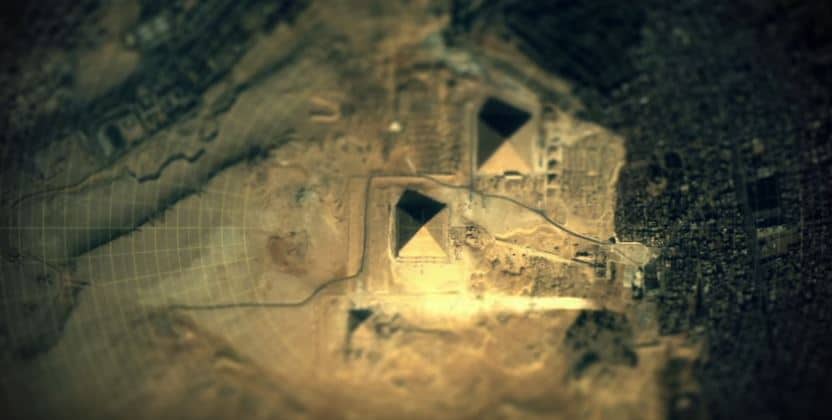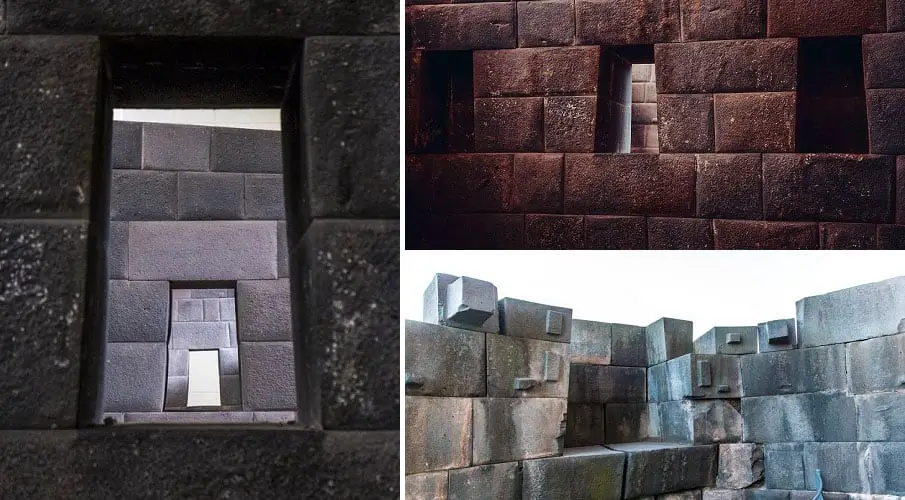
The Valley Temple of Khafre located at the Giza plateau is one of the most fascinating ancient structures on Earth. It features supermassive blocks of stones, some exceeding 150 tons in weight, and design elements that eerily resemble elements found halfway around the world, in Peru.
In addition to that, the incredible ‘bent’ stones in the interior are another detail which has caused confusion and admiration among experts and tourists alike.
One of the most famous Valley Temples in Egypt is without a doubt the one belonging to Khafre, located at the Giza plateau, a mere 500 meters from the Pyramid of Khafre and in close proximity to the Great Sphinx.
It happens to be one of the best preserved ancient temples in Egypt, surviving thousands of years nearly intact having been covered by sand until the 19th century.
The temple’s limestone walls measure 45 m and their thickness decreases exponentially, giving it an exterior appearance of a Mastaba.
The walls are covered with polished red granite both inside and outside, while the floor is white limestone.
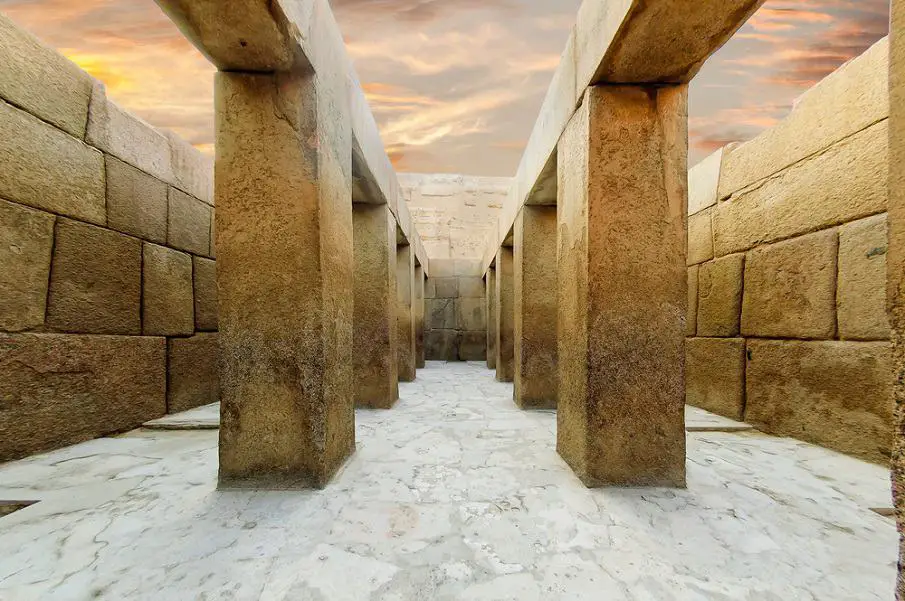
Auguste Mariette discovered it in 1852, and gave it the name of Temple of the Sphinx, believing it to serve it.
It is believed that the temple served both for the pharaoh’s mummification process and for its purification before being buried in the pyramid.
The entrances are flanked by sphinxes, and the roof of the structure is supported by columns also made of red granite.
It is devoid of paintings and inscriptions, and has openings in the upper part of the walls that provide natural light.
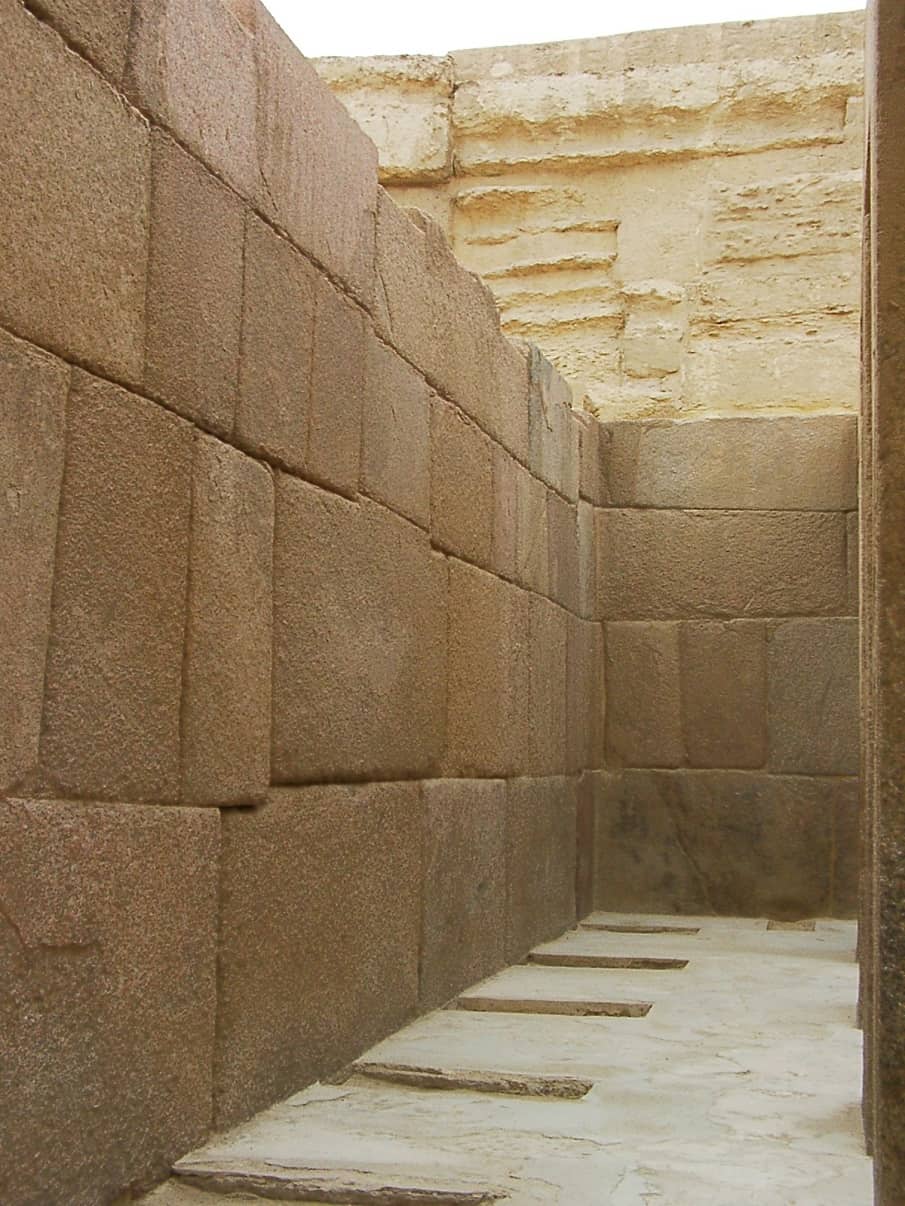
Its interior was decorated with statues of the Pharaoh, which were placed in an existing well in later dates to its construction.
They are all very deteriorated, except one which was made out of diorite and now stored in the Egyptian Museum in Cairo.
The temple itself is considered an absolute wonder of ancient engineering for a number of reasons.
Its distinctive architectural style makes it one of the oldest and best-preserved buildings in Egypt.
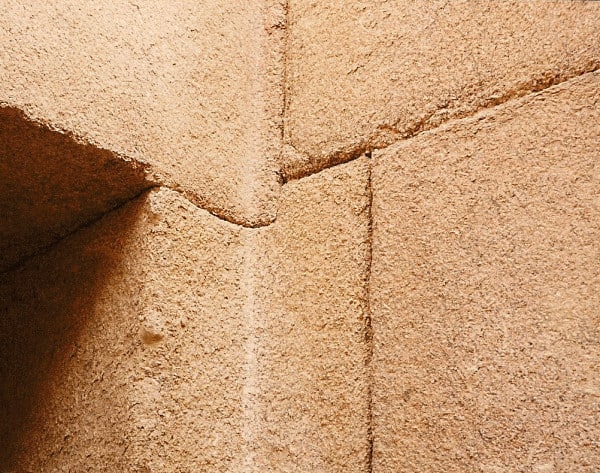
The only other known temple of similar magnitude is the Sphinx Temple located next to it, and the incredible Osirion temple at Abydos, in Upper Egypt. All three temples feature incredible details that have confused experts ever since their discoveries.
One of the main characteristics of the Valley Temple at Giza is the huge amount of megalithic stones used in its construction. The core structure of the valley temple is one of its most unusual characteristics: its built entirely of massive limestone blocks which exceed 100 to 150 tons in weight (each).
It remains a complete mystery as to how the ancient builders managed to transport and lift these massive stones to heights of more than 40 feet.
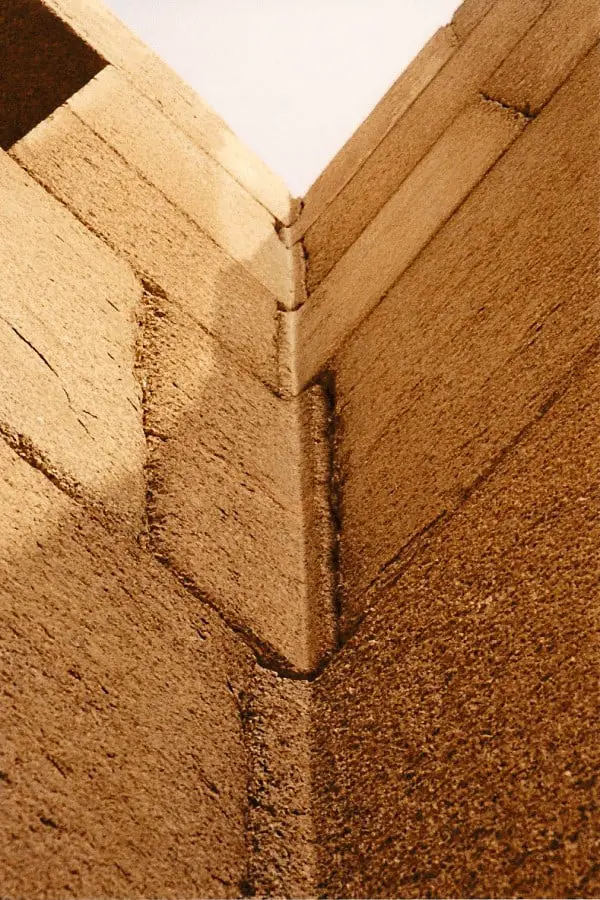
The stones are believed to have been quarried near the Great Sphinx.
In addition to the sheer quantity and size of the stones used in the construction, another mind-boggling feature are the walls of the temple, which have been fitted with unprecedented precision, making the interior of the temple look like a massive three-dimensional jigsaw puzzle.
The stones were manipulated with such precision that some of them have several exposed surfaces with various corners and angles.
Some of the stones appear as if they were literally molded into form, or bent to fit adjacent stones perfectly.
How the ancient builders managed all of this remains a profound mystery for scholars.
But if all of the above wasn’t mysterious enough, if we take a close look at the walls and design elements of the valley temple, we will notice a jaw-dropping similarity to other ancient sites around the globe.
If we travel to Ollantaytambo, an ancient archaeological complex in Peru we will find incredible, supermassive walls, erected by ancient civilizations thousands of years ago.
To the surprise of many, if we compare the valley temple at the Giza plateau, to the structures located at Ollantaytambo in Peru, or the Coricancha temple in Cusco, we will notice an uncanny similarity that jumps out.

The incredible Coricancha temple features elements of design that are eerily reminiscent of its counterpart in Egypt.
The questions remain, are all of these similarities a mere coincidence? How is it possible that ancient civilizations around the globe quarried, transported and placed with a millimetric precision, supermassive stones that exceed one hundred tons in weight?
Did they follow the say blueprint? What type of technology did they use? And how did they all achieve this, without the use of ‘modern’ technology?

